
HUMAN A+P MOD.MASTERING
2nd Edition
ISBN: 9780136919520
Author: AMERMAN
Publisher: PEARSON
expand_more
expand_more
format_list_bulleted
Question
Chapter 26.3, Problem 4QC
Summary Introduction
To review:
The point at which a sperm cell matures.
Introduction:
The process of spermatogenesis involves the development of haploid spermatids from diploid spermatogenic cells. The seminiferous tubules in the testis are the site for spermatogenesis. It begins at puberty and continues throughout the life. On an average, a healthy adult male can produce about 400 million sperm.
Expert Solution & Answer
Want to see the full answer?
Check out a sample textbook solution
Students have asked these similar questions
This practice question is from the textbook "Genetics: From Genes to Genomes". It is chapter 13, question 9.
a. Which two of the breakpoints could yield a deletion?
b. Write the sequence and polarity of a 16-base primer that, in conjunction with primer A, will allow you to diagnose the presence of a deletion in a patient’s genomic DNA. The evidence should be positive, not negative. (That is, you will see a PCR product whose presence and/or size is specific to the deletion; the absence of a band is not informative.)
c. Which two of the breakpoints could yield an inversion?
d. Write the sequence and polarity of a 16-base primer that, in conjunction with primer A, will allow you to diagnose the presence of an inversion in a patient’s genomic DNA. Your answer should show the primer that would yield the longest possible diagnostic PCR product. Your primer cannot cross any of the red lines.
e. Which two of the breakpoints could yield a reciprocal translocation? (Two possible answers exist;…
MyoD is a transcriptional factor that acts specifically in muscle cells. It is hypothesized that Id proteins indirectly repress the transcription of muscle-specific proteins by inhibiting the function of MyoD. Which of the following are mechanisms by which Id proteins act as indirect repressors? (choose all that applies)
Compete with activators for access to an enhancer.
Bind the activation domain of an activator bound to an enhancer.
Bind to activators and hold them in the cytoplasm.
Form heterodimers with activators and lessen the homodimers of activators.
Please explain each answer choice please.
Week 4 Rodney Balbo's Imaging service
Chapter 26 Solutions
HUMAN A+P MOD.MASTERING
Ch. 26.1 - 1. What are the male and female gonads? What are...Ch. 26.1 - Which mechanisms increase the genetic variability...Ch. 26.1 - Prob. 3QCCh. 26.1 - Prob. 4QCCh. 26.1 - Prob. 5QCCh. 26.1 - Prob. 6QCCh. 26.2 - Which cell type in the testes produces sperm?...Ch. 26.2 - Prob. 2QCCh. 26.2 - 3. What is the function of the epididymis? How...Ch. 26.2 - 4. Trace the pathway that sperm take from the...
Ch. 26.2 - Prob. 5QCCh. 26.2 - Prob. 6QCCh. 26.2 - Prob. 7QCCh. 26.2 - Prob. 8QCCh. 26.2 - Prob. 9QCCh. 26.2 - Which part of the duct system passes through the...Ch. 26.3 - What are the steps of spermatogenesis?Ch. 26.3 - How do sustentacular cells support developing...Ch. 26.3 - Prob. 3QCCh. 26.3 - Prob. 4QCCh. 26.3 - Prob. 5QCCh. 26.3 - On what type of cell do FSH and LH act in males,...Ch. 26.3 - 7. What are the reproductive functions of...Ch. 26.3 - Prob. 8QCCh. 26.3 - Prob. 9QCCh. 26.3 - Prob. 10QCCh. 26.3 - Prob. 11QCCh. 26.3 - Prob. 12QCCh. 26.3 - Prob. 13QCCh. 26.3 - Prob. 14QCCh. 26.4 - What are the main functions of the ovaries?Ch. 26.4 - Which three ligaments support the ovary, and to...Ch. 26.4 - What structures catch an ovulated oocyte and move...Ch. 26.4 - Prob. 4QCCh. 26.4 - Prob. 5QCCh. 26.4 - Prob. 6QCCh. 26.4 - Prob. 7QCCh. 26.4 - Prob. 8QCCh. 26.4 - Prob. 9QCCh. 26.4 - 10. How are the external genitalia of the female...Ch. 26.4 - 11. Which structures do not fully develop in the...Ch. 26.4 - Prob. 12QCCh. 26.5 - When in the life cycle of a female does oogenesis...Ch. 26.5 - When is development of an oocyte arrested, and...Ch. 26.5 - How many ova are produced at the end of oogenesis?...Ch. 26.5 - What are the seven stages of the ovarian cycle?...Ch. 26.5 - Prob. 5QCCh. 26.5 - Prob. 6QCCh. 26.5 - Prob. 7QCCh. 26.5 - Prob. 8QCCh. 26.5 - 9. How do levels of ovarian hormones and...Ch. 26.5 - What are the similarities between the male and...Ch. 26.5 - What are the differences between the male and...Ch. 26.5 - Prob. 12QCCh. 26.5 - What are the female secondary sex characteristics?Ch. 26.5 - Prob. 14QCCh. 26.5 - Prob. 15QCCh. 26.6 - 1. Why do most behavioral methods of birth...Ch. 26.6 - Prob. 2QCCh. 26.6 - How do oral contraceptive pills prevent pregnancy?Ch. 26.6 - Prob. 4QCCh. 26.6 - 5. How do intrauterine devices prevent...Ch. 26.6 - Which methods of birth control are also called...Ch. 26.7 - Prob. 1QCCh. 26.7 - Prob. 2QCCh. 26.7 - Prob. 3QCCh. 26.7 - Prob. 4QCCh. 26 - Prob. 1CYRCh. 26 - Match the specific phase of meiosis with the...Ch. 26 - Prob. 3CYRCh. 26 - Which of the following structures is the site of...Ch. 26 - Prob. 5CYRCh. 26 - Prob. 6CYRCh. 26 - Match the component of the glandular secretions...Ch. 26 - Prob. 8CYRCh. 26 - Prob. 9CYRCh. 26 - Prob. 10CYRCh. 26 - Prob. 11CYRCh. 26 - Prob. 12CYRCh. 26 - Prob. 13CYRCh. 26 - Prob. 14CYRCh. 26 - Prob. 15CYRCh. 26 - Mark the following statements about oogenesis as...Ch. 26 - Prob. 17CYRCh. 26 - 18. Number the sequence of events in the hormonal...Ch. 26 - 19. Mark the following statements about the...Ch. 26 - Prob. 20CYRCh. 26 - Prob. 21CYRCh. 26 - Prob. 22CYRCh. 26 - Prob. 1CYUCh. 26 - Prob. 2CYUCh. 26 - Prob. 3CYUCh. 26 - Explain why oral contraceptives, which...Ch. 26 - Prob. 1AYKACh. 26 - Prob. 2AYKACh. 26 - Prob. 3AYKACh. 26 - Prob. 4AYKB
Knowledge Booster
Learn more about
Need a deep-dive on the concept behind this application? Look no further. Learn more about this topic, biology and related others by exploring similar questions and additional content below.Similar questions
- "Which of the following about transposable elements (TEs) is false?" RNA transposons move using an RNA intermediate. DNA transposons make up 3% of the human genome but are disruptive. Genes can move within the same chromosome via TEs. The Drosophila P element can only move in germline cells. Can you explain each answer choices pleae?arrow_forwardWhat will control the rate of bioremediation of petroleum? (Choose all correct answers) The availability of the petroleum The temperature of the water The availability of oxygen The percent of the population that has degraded petroleum in the pastarrow_forwardWhich of the following would lead to a false negative result in a sandwich ELISA (the lab manual refers to this as a direct ELISA- also known as search for antigen)? Mark all correct answers. antibody was non-specific and bound to something other than the antigen of interest. too short of a duration when incubating the reagents in the plate. If there are multiple strains of the pathogen of interest and the antibody does not recognize one of the strains. Did not sample the correct bodily fluid/area to detect the antigen concentration of antigen was too low to detect in the patient sample. inadequate washing was performed after the enzyme linked antibody was allowed to bind. substrate was exposed to too much light reusing a pipette that was used to pipette a positive sample.arrow_forward
- S. +1269 pts /1500 © Macmillan Learning 0 Resources Solution Penalized Feedback Try Again Draw the final product with stereochemistry and lone pairs. The leaving group has been pre-drawn for your convenience. +100 +100 : 0: + H,C- :0: : 0 0 : +100 +94 possible ✓ +100 K Attemparrow_forward+1269 pts /1500 © Macmillan Learning t/1188d950-dd73-11e0-9572-0800200c9a66/3045511b-267e-4a00-86ca-85dbc62ecb4e/6ac3a0c9-... a □ 出 All Bookmarks Due: Mon, May 26 Resources Solution Penalized Feedback Try Again KX Attempt 3 Draw the final product with stereochemistry and lone pairs. The leaving group has been pre-drawn for your convenience. :0: + нс H,C- :0: : 0:arrow_forwards. +1169 pts /1500 © Macmillan Learning 0 Resources Hint Submit Answer Step 3: This tertiary carbocation intermediate readily undergoes elimination with any weak base to form two possible products. + + H :0: H +94 possible 3a) Draw the minor organic product of elimination. Select Draw Templates More +100 +95 possible # C Major product + Minor product 3b) Draw the major organic product of elimination. Erase Select Draw Templates More C Erasearrow_forward
- Explain the Science & Society on (with links and pictures): ---- Question down below Discuss the ethical, medical, and societal implications of using advanced genetic techniques?arrow_forwardExplain the Disease Mechanism & Impact on (with links and pictures): What causes Leigh Syndrome and why it's so deadly. Which cellular functions, organelles (especially mitochondria), and macromolecules are involved.arrow_forwardExplain the Disease Mechanism & Impact on (with links and pictures): What's going wrong inside the cell and the effects on the human body. Describe metabolism with an emphasis on cellular respiration.arrow_forward
- Explain the Disease Mechanism & Impact on (with links and pictures):arrow_forwardExplain the Science & Society on (with links and pictures): Discuss the ethical, medical, and societal implications of using advanced genetic techniques.arrow_forward↑ LED Tt O Tt e 0 ✓ B > FLORES DIology Second Semester Review 7. Chi Square Analysis: wild dumpy male x ebony wild female F1: All wild wild F2: 142 wild wild males 52 wild ebony males 46 dumpy wild males 17 dumpy ebony males 151 wild wild females 47 wild ebony females 51 dumpy wild females 8 dumpy ebony females What pattern of inheritance is observed for body color? Autosomal recessive Autosomal dominant Sex-linked recessive Sex-linked dominant What are the genotypes of the parents in the P generation? a. XBYdd x XbXbDD b. Bbdd x bbDd c. BBdd x bbDD d. BBX Y x bbXDY How many flies in the F2 generation would you expect to express the dumpy wild phenotype? a. 289.125 b. 97 c. 96.375 d. 293arrow_forward
arrow_back_ios
SEE MORE QUESTIONS
arrow_forward_ios
Recommended textbooks for you
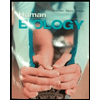 Human Biology (MindTap Course List)BiologyISBN:9781305112100Author:Cecie Starr, Beverly McMillanPublisher:Cengage Learning
Human Biology (MindTap Course List)BiologyISBN:9781305112100Author:Cecie Starr, Beverly McMillanPublisher:Cengage Learning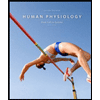 Human Physiology: From Cells to Systems (MindTap ...BiologyISBN:9781285866932Author:Lauralee SherwoodPublisher:Cengage Learning
Human Physiology: From Cells to Systems (MindTap ...BiologyISBN:9781285866932Author:Lauralee SherwoodPublisher:Cengage Learning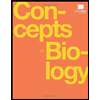 Concepts of BiologyBiologyISBN:9781938168116Author:Samantha Fowler, Rebecca Roush, James WisePublisher:OpenStax College
Concepts of BiologyBiologyISBN:9781938168116Author:Samantha Fowler, Rebecca Roush, James WisePublisher:OpenStax College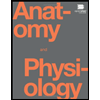 Anatomy & PhysiologyBiologyISBN:9781938168130Author:Kelly A. Young, James A. Wise, Peter DeSaix, Dean H. Kruse, Brandon Poe, Eddie Johnson, Jody E. Johnson, Oksana Korol, J. Gordon Betts, Mark WomblePublisher:OpenStax College
Anatomy & PhysiologyBiologyISBN:9781938168130Author:Kelly A. Young, James A. Wise, Peter DeSaix, Dean H. Kruse, Brandon Poe, Eddie Johnson, Jody E. Johnson, Oksana Korol, J. Gordon Betts, Mark WomblePublisher:OpenStax College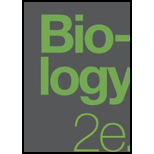 Biology 2eBiologyISBN:9781947172517Author:Matthew Douglas, Jung Choi, Mary Ann ClarkPublisher:OpenStax
Biology 2eBiologyISBN:9781947172517Author:Matthew Douglas, Jung Choi, Mary Ann ClarkPublisher:OpenStax

Human Biology (MindTap Course List)
Biology
ISBN:9781305112100
Author:Cecie Starr, Beverly McMillan
Publisher:Cengage Learning

Human Physiology: From Cells to Systems (MindTap ...
Biology
ISBN:9781285866932
Author:Lauralee Sherwood
Publisher:Cengage Learning


Concepts of Biology
Biology
ISBN:9781938168116
Author:Samantha Fowler, Rebecca Roush, James Wise
Publisher:OpenStax College

Anatomy & Physiology
Biology
ISBN:9781938168130
Author:Kelly A. Young, James A. Wise, Peter DeSaix, Dean H. Kruse, Brandon Poe, Eddie Johnson, Jody E. Johnson, Oksana Korol, J. Gordon Betts, Mark Womble
Publisher:OpenStax College

Biology 2e
Biology
ISBN:9781947172517
Author:Matthew Douglas, Jung Choi, Mary Ann Clark
Publisher:OpenStax
Reproduction: Crash Course Zoology #9; Author: CrashCourse;https://www.youtube.com/watch?v=poLyJDVjKlM;License: Standard youtube license